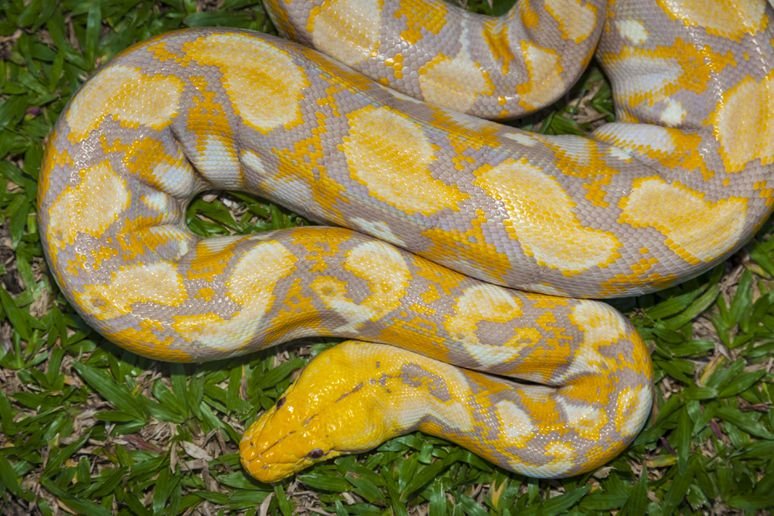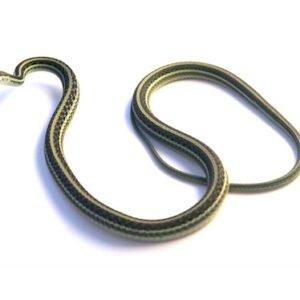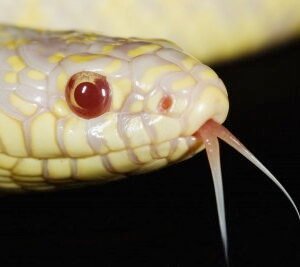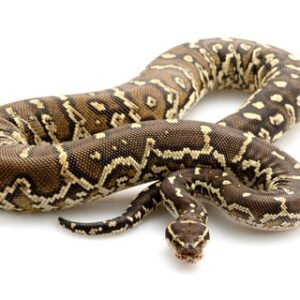Introduction to Burmese Pythons
The Burmese python, known scientifically as Python bivittatus, is a large nonvenomous snake species that is native to Southeast Asia. They are among the largest snakes in the world, often reaching lengths of up to 23 feet, although individuals exceeding 16 feet are more commonly observed in the wild. Characterized by their distinctive coloration, they typically exhibit a patterned skin that ranges from tan to gold with dark brown or black blotches. This coloration not only provides them with a striking aesthetic but also serves as effective camouflage in their natural habitat.
The natural range of Burmese pythons extends across a variety of environments, including tropical moist forests, grasslands, and even swamps. Areas such as Myanmar, Thailand, and parts of Indonesia are particularly known for their populations of this fascinating species. They tend to favor regions close to water sources, given their proficiency in swimming, enabling them to navigate both aquatic and terrestrial habitats with ease.
As the Burmese python continues to captivate the interest of herpetologists and wildlife enthusiasts alike, understanding their biology and behavior becomes essential for conservation efforts and the broader ecological narratives within their native range. The exploration of their unique characteristics and cultural significance will shed light on the importance of preserving this majestic species.
Behavior and Habitat
The Burmese python (Python bivittatus) is a highly adaptable species, showcasing a variety of behaviors that facilitate its survival across diverse environments. These snakes exhibit primarily ambush predation techniques, utilizing their excellent camouflage to hunt effectively. They often lie motionless for long periods, waiting for unsuspecting prey to approach. Upon detecting movement nearby, they rapidly strike with precision, employing constriction to subdue larger prey items, which can include mammals and birds.
Feeding habits of Burmese pythons are influenced by their habitat, which can range from swampy wetlands to grasslands and tropical forests. Their diet typically consists of small to medium-sized mammals, such as rodents and rabbits, although they are capable of taking down larger animals. This species demonstrates remarkable adaptability in their foraging behavior, often adjusting their hunting patterns based on the availability of food sources and environmental conditions.
In terms of mating rituals, Burmese pythons engage in a courtship process characterized by complex behaviors. Males will often engage in combat with one another to gain access to a female. Once mating is successful, females will lay clutches of eggs in secure sites, demonstrating a preference for locations that minimize predation risks. After laying eggs, females exhibit maternal care, coiling around their clutch to protect it from potential threats until hatching occurs.
Burmese pythons are primarily nocturnal, becoming more active during the cooler hours of the night in search of food. Their activity patterns also change seasonally; for instance, they may be more active during the rainy season when prey is abundant. Interactions with other species vary, as they occupy a crucial role as both predator and prey within their ecosystem. Their presence influences the population dynamics of various species, contributing to the greater ecological balance.
Keeping a Burmese python as a pet can be an intriguing endeavor; however, it comes with specific challenges and responsibilities that potential owners must consider. One of the most crucial aspects of caring for these large constrictors is understanding their size and habitat needs. Adult Burmese pythons can reach lengths of up to 20 feet, requiring spacious enclosures that facilitate their growth and movement. A proper habitat should mimic their natural environment, including hiding spots and a temperature gradient to allow for thermoregulation. Furthermore, an enclosure must maintain appropriate humidity levels and be escape-proof, as these snakes are proficient at escaping their confines.
Feeding is another significant consideration for anyone looking to own a Burmese python. These constrictors primarily consume small to medium-sized mammals, depending on their age and size. It is vital to provide appropriately sized prey that is frozen and thawed before feeding, as live prey can pose risks to both the snake and its owner. Regular feeding schedules and monitoring the python’s weight are essential to ensure optimal health and prevent obesity-related issues.
Health concerns are inherent in keeping any exotic pet, and Burmese pythons are no exception. Potential diseases, parasites, and nutritional deficiencies should be closely monitored. It is advisable to establish a relationship with a veterinarian who specializes in reptiles to provide timely care and advice. Additionally, ethical considerations play a critical role in the ownership of Burmese pythons. Prospective owners should source their snakes from reputable breeders or rescue organizations to avoid supporting unethical wildlife trafficking practices.
In conclusion, owning a Burmese python demands a significant commitment to their care and well-being. Aspiring owners must educate themselves on housing, feeding requirements, and health management to ensure a healthy coexistence with these magnificent reptiles.
Conservation Status and Efforts
The Burmese python (Python bivittatus) is currently listed as a vulnerable species according to the International Union for Conservation of Nature (IUCN). The primary threats faced by these reptiles include habitat loss, degradation, and illegal capture for the exotic pet trade. The expansion of agriculture, urban development, and deforestation are significant factors that contribute to the destruction of their natural habitat across Southeast Asia, leading to a sharp decline in their populations. Furthermore, Burmese pythons are often targeted due to their skin, which is highly valued in the fashion industry, compounding their conservation challenges.
In response to these pressing issues, various global conservation efforts have been implemented to protect Burmese python populations. Governments and organizations are collaborating to enforce stricter regulations on trade and capture, emphasizing the need for sustainable practices. For instance, the Convention on International Trade in Endangered Species of Wild Fauna and Flora (CITES) regulates the international trade of the species, mandating that any commercial export is conducted in compliance with specific guidelines to ensure that it does not jeopardize the survival of the species in the wild.
Awareness campaigns have also played a crucial role in educating the public about the importance of preserving the Burmese python and its habitat. Environmental NGOs often conduct outreach programs aimed at local communities to foster a greater understanding of the ecological significance of the species. These initiatives encourage community involvement in conservation practices, such as habitat restoration and anti-poaching efforts. Individuals can contribute by supporting conservation organizations, promoting sustainable practices, and advocating for policies that protect wildlife and their habitats. By fostering greater awareness and understanding of the challenges faced by Burmese pythons, it is possible to enhance their conservation status and ensure their survival for future generations.





